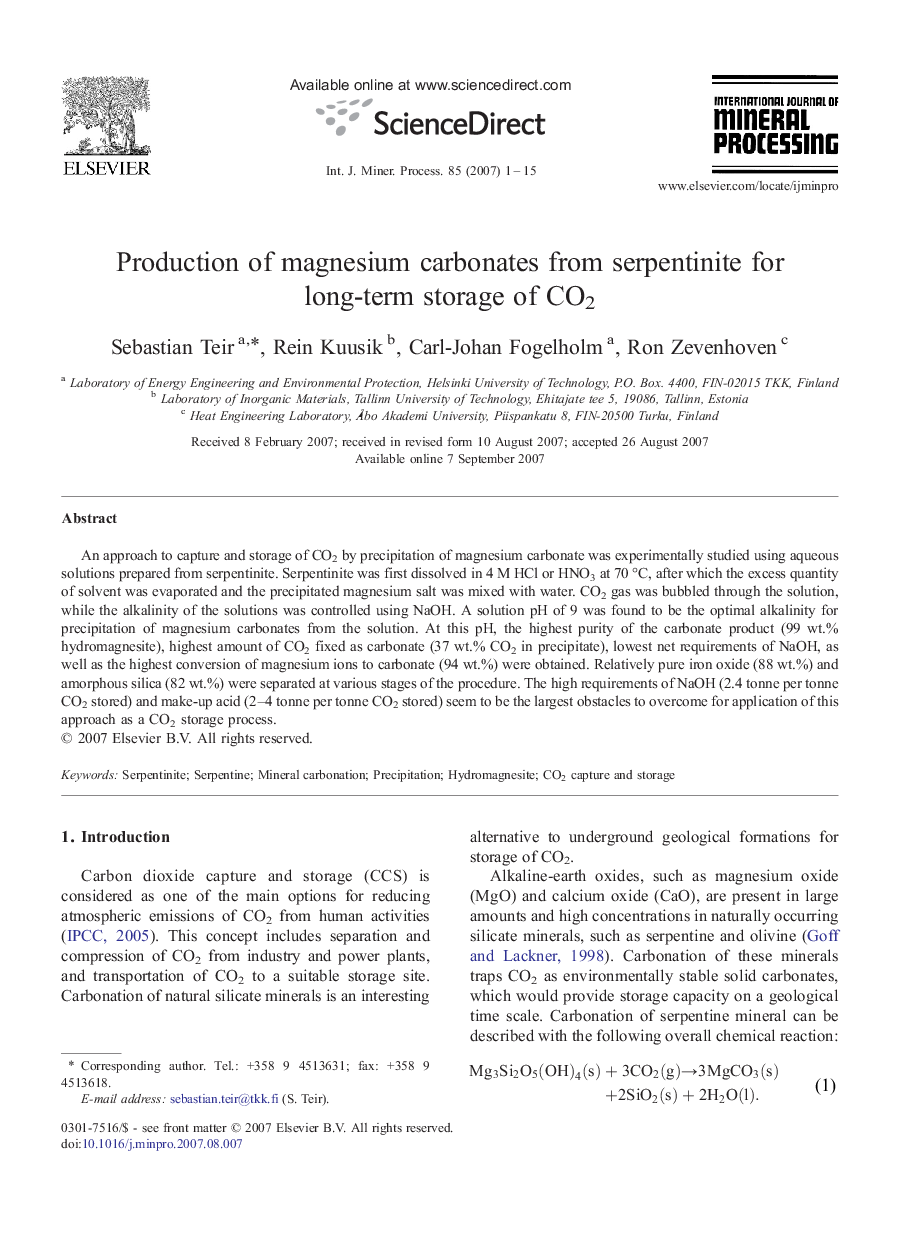| Article ID | Journal | Published Year | Pages | File Type |
|---|---|---|---|---|
| 214525 | International Journal of Mineral Processing | 2007 | 15 Pages |
An approach to capture and storage of CO2 by precipitation of magnesium carbonate was experimentally studied using aqueous solutions prepared from serpentinite. Serpentinite was first dissolved in 4 M HCl or HNO3 at 70 °C, after which the excess quantity of solvent was evaporated and the precipitated magnesium salt was mixed with water. CO2 gas was bubbled through the solution, while the alkalinity of the solutions was controlled using NaOH. A solution pH of 9 was found to be the optimal alkalinity for precipitation of magnesium carbonates from the solution. At this pH, the highest purity of the carbonate product (99 wt.% hydromagnesite), highest amount of CO2 fixed as carbonate (37 wt.% CO2 in precipitate), lowest net requirements of NaOH, as well as the highest conversion of magnesium ions to carbonate (94 wt.%) were obtained. Relatively pure iron oxide (88 wt.%) and amorphous silica (82 wt.%) were separated at various stages of the procedure. The high requirements of NaOH (2.4 tonne per tonne CO2 stored) and make-up acid (2–4 tonne per tonne CO2 stored) seem to be the largest obstacles to overcome for application of this approach as a CO2 storage process.
